Japanese candlestick trading guide
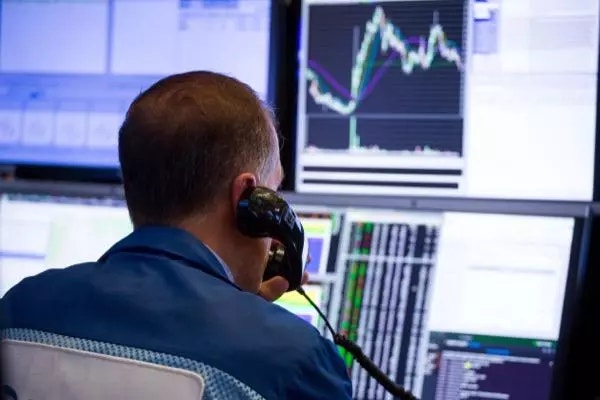
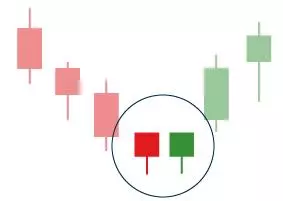
What is a Japanese candlestick?
A Japanese candlestick is a type of price chart that shows the opening, closing, high and low price points for each given period. It was invented by Japanese rice merchants centuries ago, and popularized among Western traders by a broker called Steve Nison in the 1990s.
Today, Japanese candlestick charts are the most popular way to quickly analyze price action, particularly with technical traders. They offer much more information visually than traditional line charts, showing a market's highest point, lowest point, opening price and closing price at a glance.
High Low Open Close (HLOC) charts display a similar level of detail to candlesticks – but traders tend to favor the latter, finding them easier to analyze quickly than HLOC. It's worth trying out both and seeing which works best for you.
As well as using them to track previous price movements, technical traders look for Japanese candlestick patterns for clues on where a market’s headed next. They do this by looking for recognizable shapes that often lead to continuations or reversals.
Candlesticks can be used to examine price action over any timeframe, from one second up to an entire year.
How to read Japanese candlestick patterns
To read Japanese candlestick patterns, you'll need to familiarize yourself with three elements on each candle: its color, its body and its wick. Its color tells you the direction of movement within the period, its body displays the market's opening and closing levels and its wick shows the high/low range.
- On most charts today, green candlesticks indicate upward movement and red ones a move down. However, occasionally white (up) and black (down) is used instead
- On a green candle, the top of the body is the close and the bottom is the open. On a red one, the opposite is true
- On both red and green sticks, the top of the wick (sometimes called the shadow) is the highest point that the market has hit within the period – and the bottom is the lowest
Using those three elements, you can learn a lot about a market’s movement within a particular period. A long body on a green candlestick, for example, tells you that significant bullish price action occurred.
If the wick is even taller than a long body, it shows that there was a high level of volatility within the period. So bulls and bears may have been vying for control, with bulls eventually winning out.
A short red body with a high upper wick, meanwhile, indicates that bulls pushed a market’s price higher, but were beaten back by bears before close. And if there’s no wick at all, you know that the open or closing price was also the high/low.
Some patterns are taken as indications of probable future movement by technical traders. The theory here is straightforward – these patterns reveal particular behavior that has often led to specific outcomes in the past.
There are three types of candlestick pattern: single, double and triple. This is based on the number of sticks that make up the pattern.
While past performance is no guarantee of future price movement, these patterns can be useful when spotting opportunities. Let’s take a look at some popular examples.
Top 18 Japanese candlestick patterns
| Sentiment | Type | |
| Spinning top | Neutral | Single |
| Green marubozu | Bullish | Single |
| Red marubozu | Bearish | Single |
| Doji | Neutral | Single |
| Hammer | Bullish | Single |
| Inverted hammer | Bullish | Single |
| Hanging man | Bearish | Single |
| Shooting star | Bearish | Single |
| Engulfing | Either | Double |
| Harami | Either | Double |
| Harami cross | Either | Double |
| Homing pigeon | Bullish | Double |
| Tweezers | Either | Double |
| Morning star | Bullish | Triple |
| Evening star | Bearish | Triple |
| Three white soldiers | Bullish | Triple |
| Three black crows | Bearish | Triple |
| Three inside up | Bullish | Triple |
| Three inside down | Bearish | Triple |
| Rising three | Bullish | Triple |
| Falling three | Bearish | Triple |
Single candlestick patterns
These are some of the simplest patterns you can find, comprising just one trading period. Often, they form the building blocks of longer patterns.
Spinning tops
A spinning top is formed when a candlestick has a long wick both above and below a narrow body. So the market had an extensive trading range, but little difference between its open and close.
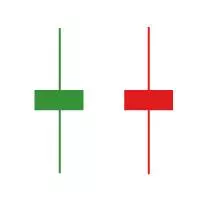
Unlike most candle patterns, it doesn't really matter if a spinning top is formed on a red or green stick – there just needs to be a small body and a long wick.
In a spinning top, there's a tug of war between buyers and sellers. But the bears and bulls are cancelling each other out, so there’s little in the way of actual movement.
Technical traders take spinning tops as an indication of weakness in an ongoing trend. If a market forms a spinning top after a lengthy bull run, then positive sentiment may be running out. After a downtrend, meanwhile, bullish opinion may be gaining strength.
Marubozu
Marubozu comes from the Japanese word for ‘bald’. It means a candlestick that has no wick whatsoever.
- A green marubozu opened and closed at its lowest and highest levels respectively
- A red marubozu opened and closed at its highest and lowest levels respectively
If we visualize the movement within a green marubzuo, there'd be no price action above or below the open and close prices:

As you can see, this makes a bald green stick an indication of clear bullish sentiment. Bulls pushed the market's price higher with little fightback from bears.
If this occurs as part of an uptrend, technical traders see it as a sign that the upward movement will continue. If it happens after a downtrend, a reversal may be on the cards.
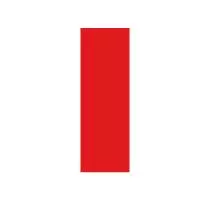
Red marubozu, meanwhile, are the exact opposite. They tell you that bears were in almost total control of a session – and therefore that a downtrend could continue or an uptrend may reverse.
Doji
In a doji pattern, the open and close prices are exactly equal (or almost exactly equal). So the body appears as a very thin line – typically less than 5% of the total range of the period.
Like spinning tops, this can tell you that the bulls and bears have cancelled each other out by the end of the session.
There are four main types of doji to watch out for:
- Long-legged doji have a lengthy wick both above and below the body
- Gravestone doji have a high wick above the body and nothing underneath
- Dragonfly doji have a long wick beneath the body and little to no wick above it
- Four-price doji have no wick at all
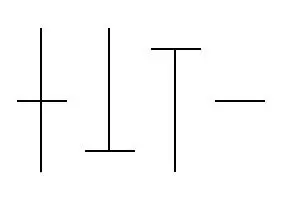
Doji are often taken as an indication of an upcoming reversal. If a market forms a after an extensive uptrend, then it may be about to head back down. After a bear move, selling sentiment could be exhausted, meaning bulls are about to take over.
Hammer
If a market forms a hammer after an extended move down, then technical traders believe that it might be about to mount a bullish fightback.
You can spot a hammer by its long wick below a comparatively short body, with little to no wick above. The body should be two to three times shorter than the lower wick.
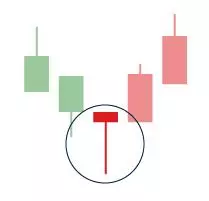
This shows that the market hit a new low during the session, but bounced back and closed much higher. So while there was significant selling pressure, buyers stepped in to push back the bears before close.
While bearish sentiment is weakening, that doesn't necessarily mean a reversal is imminent. So most technical traders will wait for a confirmation before opening a position on a hammer – usually a strong upward move in the next period.
Inverted hammer
Inverted hammers look exactly the same as hammers, just upside down. So there's a comparatively short body underneath a high upper wick, with little range below.
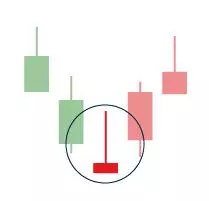
They also appear after downtrends and are taken as a possible signal that a reversal is on the way. However, the price action within an inverted hammer is a little different.
The upper wick shows that buyers took control of the market within the session, but were met with resistance from the sellers. However, sellers were unable to push its price further down, meaning that bearish sentiment may be on the wane.
As with hammers, it's best to wait for confirmation – usually in the form of a bullish candlestick immediately after – before opening a buy position.
Hanging man
A hanging man looks identical to a hammer, the only difference being where it crops up.
While a hammer appears after a bear market, a hanging man will do so after an uptrend. They're taken as a sign that selling sentiment is growing against buyers, and therefore that a reversal may be coming soon.
The price action within a hanging man might look like this:
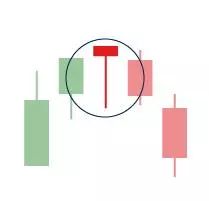
Sellers had control of the market, but met strong resistance. However, that resistance only managed to keep the price in check, it didn’t continue the bull run. So sentiment may be about to swing.
A red hanging man is usually taken as a stronger signal than a green one – though both are considered bearish patterns.
Shooting star
A shooting star, meanwhile, is a doppelgänger of an inverted hammer. But like the hanging man, a shooting star will appear at the crest of an uptrend instead of the trough of a downtrend.
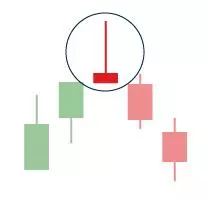
In a shooting star, the session starts with the bulls still in control. But bears take over, dragging the asset’s price back down.
- In a green shooting star, they've pulled it back to just above the open
- In a red shooting star, they've pulled it down below the open
Both indicate that a reversal may be imminent. But like the hammer, inverted hammer and hanging man, it's often a good idea to wait for signs of a new bear market before trading.
Double candlestick patterns
When a signal is formed from two consecutive periods, it’s known as a double candlestick pattern. These often hint at upcoming trend reversals, but can also be used to identify continuations.
Engulfing
In the engulfing pattern, a candlestick is immediately followed by another larger one in the opposite direction.
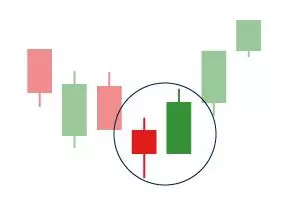
In the bullish engulfing, a red candle is dwarfed by the green one that follows it. Technical traders might take this as a sign that positive opinion is taking hold, so a significant move up may be on the way – particularly if a bullish engulfing appears after a period of consolidation.
A bearish engulfing arises when a bullish stick is then swallowed by a subsequent bearish one. So negative opinion may be forming.
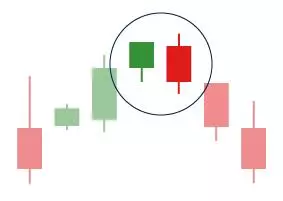
Harami
A harami is essentially a backwards engulfing pattern: a candlestick is followed by a much smaller one in the opposite direction.
The name harami comes from the Japanese for pregnant, because some believe that the pattern resembles a pregnant person.
In a bullish harami, a red candlestick is followed by a green one that is completely contained within the body of the previous candle. This is often taken as a sign that a downtrend may be ending.
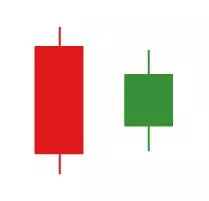
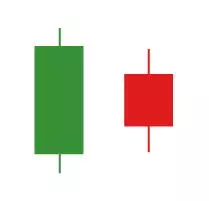
In a bearish harami, the opposite happens: a green candle followed by a smaller red one. In both cases, the size of the second stick is used to determine the strength of the signal: the smaller the better.
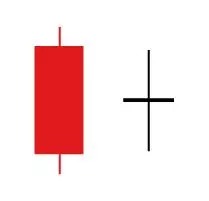
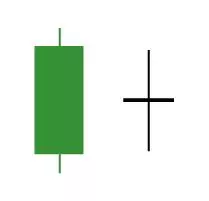
If a harami is followed by a doji – the smallest possible candle body – then it's known as a harami cross.
Homing pigeon
A bullish homing pigeon, meanwhile, looks similar to a harami – except that both candlesticks are red.
The second candle's body is contained entirely within the first's. This is taken as a sign that an uptrend may be about to commence.
Traders searching for homing pigeons will look for downtrends that are weakening or nearing a key point of support. Homing pigeons are considered less useful in highly volatile conditions.
Tweezers
In a tweezers pattern, two identical candlesticks in opposite directions appear after a bull or bear market. Tweezers are taken as a sign of an upcoming reversal.
The first candle in a tweezer matches the previous trend. So in an uptrend, it'd be green. It should have a short body at the top, with a lengthy wick beneath. In a downtrend, it'd be red with a short body at the bottom and a tall wick above.
The second candle is the opposite color, but otherwise identical. So together, the two look like a pair of tweezers.

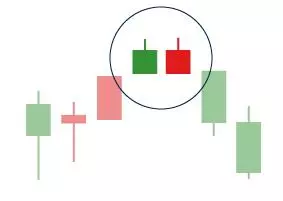
Triple candlestick patterns
The longest patterns we’ll cover in this article are triples, which are made across three consecutive periods. Triple candlestick patterns are often seen as some of the strongest signals of an upcoming move.
Morning star
A morning star plays out as a market hits a point of indecision after an extended downward movement, then begins to recover. It consists of three candlesticks:
- A red one with a large body, which is part of the downtrend
- A candle with a short body – often a spinning top – indicating that bulls are entering into the session
- A green stick with a tall body confirming that a reversal has begun
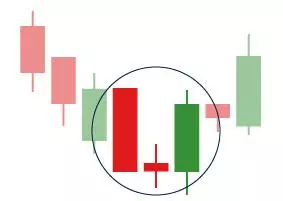
Traders may take this as a sign that the recovery will turn into a lasting uptrend.
Evening star
An evening star is the opposite of a morning star, showing a bull market that hits a point of indecision and then begins to retrace.
It looks the same as a morning star, but with a green candle at the beginning – after an extended uptrend – and a red one at the end.
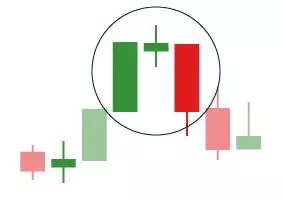
Both evening and morning stars can be formed with a doji in the middle. This indicates a stronger period of indecision, and is sometimes taken as a sign that the subsequent move will be more pronounced.
Three white soldiers
The three white soldiers pattern appears after an extended downtrend and small consolidation. Technical traders use it as one of the clearest signs that the bear market is over.
The three soldiers are:
- A green candle after a downward move
- Another green candle, with a bigger body than the first and little to no upper wick
- A third green candle, with a body that at least matches the second and little to no wick whatsoever
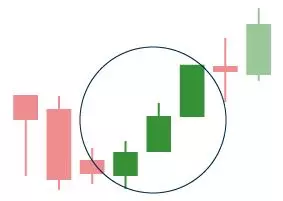
Three black crows
The three black crows pattern is the opposite of the three white soldiers. It appears after an uptrend, consists of three consecutively longer red candles and is taken as a strong signal that the bull market is over.
The second candle should have a short or non-existent lower wick, and the third should have close to no wick at all.
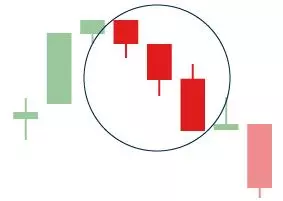
A technical trader may take the three black crows as an opportunity to open a short position to attempt to profit from the following bear run.
Three inside up
The three inside up pattern is another trend reversal indicator, appearing after a downtrend and signaling the beginning of a potential reversal.
The three candles in an inside up pattern are:
- A substantial red one that continues the previous downtrend
- A green stick with a body that closes at least halfway up the previous candle's – so the market has recovered half of the last period's losses
- A green candle that closes above the high of the first one
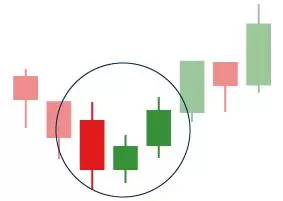
Buyers should now have overpowered sellers, arresting the market's decline and possibly kicking off a new bull trend.
Three inside down
The three inside down is a reversed inside up. It consists of a long green candle, followed by a red candle that closes at least halfway down the one before. Then another red candlestick that closes below the low set by the first.
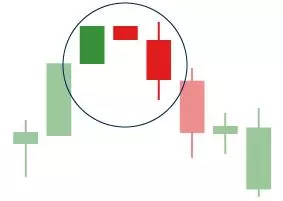
When a three inside down appears after a bull market, traders who watch for patterns might see an opportunity for a profitable short position.
Rising and falling three
The rising three (or rising three methods) is a candlestick pattern that occurs within an uptrend, and is used to identify an impending continuation.
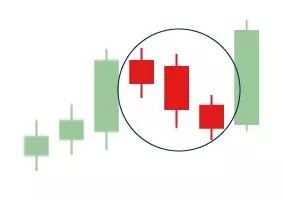
The three sticks within a rising three all occur after a green candle with a large body. They are all typically bearish, and trade within the range set by the previous bullish candle. Here, the uptrend has paused while buyers wait to see whether sentiment is turning.
But after the rising three, another large green stick shows that the bull market is back on.
In a falling three, the opposite happens. A tall red candle is followed by three smaller green ones – then another tall red candle resumes the bear run.
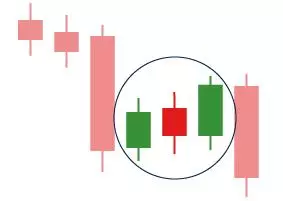
How to trade using Japanese candlesticks
- Open a tastyfx trading account to benefit from powerful charting tools
- Identify opportunities using your preferred Japanese candlestick patterns
- Open your position, ensuring you have the right risk management strategy in place
Or if you’d rather practise spotting and trading Japanese candlestick patterns without putting up any real capital, open an tastyfx demo. You’ll get $10,000 in virtual funds to try out trading forex.
Japanese candlesticks summary
- Japanese candlestick charts enable you to analyze price action at a glance
- Technical traders might use them to spot upcoming trends, reversals and continuations
- There are three main types of pattern: single, double and triple
- Open a live tastyfx account to start trading now
This information has been prepared by tastyfx, a trading name of tastyfx LLC. This material does not contain a record of our trading prices, or an offer of, or solicitation for, a transaction in any financial instrument. You should not treat any opinion expressed in this material as a specific inducement to make any investment or follow any strategy, but only as an expression of opinion. This material does not consider your investment objectives, financial situation or needs and is not intended as recommendations appropriate for you. No representation or warranty is given as to the accuracy or completeness of the above information. tastyfx accepts no responsibility for any use that may be made of these comments and for any consequences that result. See our Summary Conflicts Policy, available on our website.
